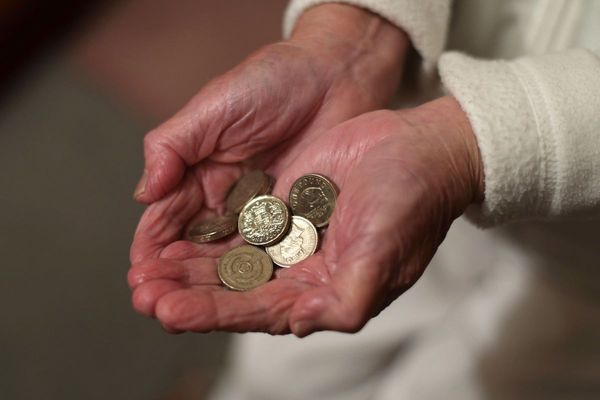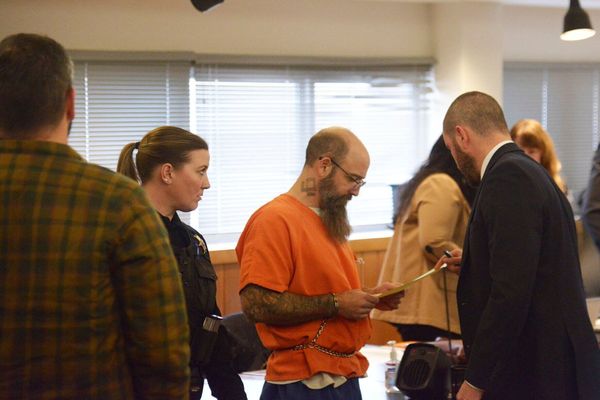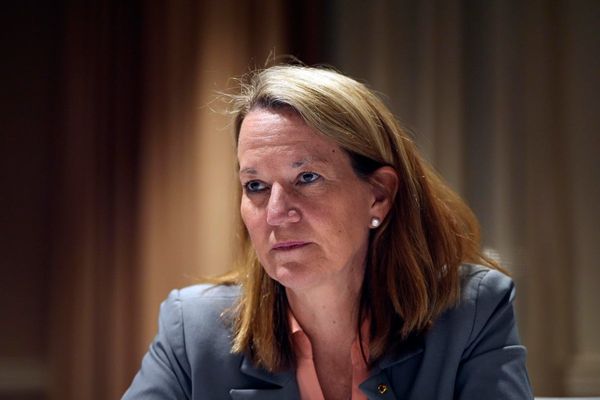
Stefano Olmastroni, a cleaner, had been tidying shelves in a supermarket selling farm produce in Florence shortly before he died on 13 July, when Italy was in the midst of an anticyclone called Cerberus that pushed temperatures beyond 40C.
Earlier in the day, the 61-year-old told relatives that he was struggling to work in the heat and was feeling sluggish. He was looking forward to resting on his day off the day after.
Olmastroni, who had heart problems, finished his shift at 3pm and was later found slumped in the changing room.
“When they found him, the temperature in the changing room was 39C,” said his niece, Sara Ndere Olmastroni. “He died before they could take him to the hospital.”
Her uncle had been working in the supermarket’s greenhouse area, where there was no air-conditioning.
“The temperature was really high and he was a person who had heart problems – a heart attack could have happened at any time but for sure, the heat didn’t help,” she added. “It was a horrible way to die – at work, and alone.”
Olmastroni is one of five people in Italy whose death over the past week is believed to have been provoked by the extreme heat as a more intense anticyclone, Caronte, broke a temperature record in Rome and nudged the mercury to almost 47C in Sicily. The true death toll is likely to be far greater.
All, apart from a 44-year-old road worker who died after collapsing while preparing fresh markings on a street in Milan and whose family is still awaiting the results of an autopsy, had heart-related health issues.
They include Ciro Adinolfi, 75, originally from Afragola near Naples, who died in front of his son, also a labourer, while operating a crane on the construction site of an Amazon warehouse in Jesi, in the central Marche region, and Gabriele Lucido, 64, from Salerno in the south, who was found dead in his lodgings after finishing his shift at a construction site in Brescia for TAV, the Italy-France high speed rail project.
Olindo Zuanon, a baker, collapsed in front of his wife in their shop in a town near Treviso, on Monday and later died in hospital. Doctors said the 63-year-old had a body temperature close to 42C.
Factory workers and outside labourers across Italy threatened to go on strike and unions called for furloughs to be activated as temperatures became too intense to work in.
“Staff should be given paid leave when the temperature exceeds 35C,” said Salvatore Cutaia, secretary general of the Milan unit of the FenealUil workers. “They also shouldn’t have to work during the hottest hours, while shaded areas should be created where they can take breaks and water provided – these small precautions can save lives.”
There are several ways somebody can die from heat. In some cases, heatstroke kills them outright because the body is too hot for its organs to work. Others die from dehydration as the body sweats to keep itself cool. For many people, particularly those with heart and lung disease, faster blood flow leads to cardio-vascular failure.
“Pre-existing conditions can make people more vulnerable to hot temperatures,” said Sonia Seneviratne, a climate scientist at ETH Zürich who has researched heatwave deaths. “Higher mortality is in particular observed in persons who are older than 65 years old.”
But young and healthy people can also die during hot conditions, she added, particularly “in cases of high physical exertion, often combined with equipment or clothing impeding heat loss”.
During the summer of 2022, people died at the highest rates from heat in Italy, followed by Greece, Spain and Portugal. The countries are some of the hottest in Europe, home to some of the oldest populations and also saw the biggest spikes in temperatures. It is not clear how much each factor increased mortality.
Doctors have warned people of all ages to stay inside and drink water to stay safe during heatwaves. They have also advised people to look out for neighbours and older relatives living alone.
In parts of Rome that ran a scheme to cut social isolation in older people, excess mortality in the summer rose less than in areas that didn’t run the scheme, according to a study published in 2021. The program, run by Catholic organisation Community of Sant’Egidio, tries to contact all people over the age of 80 in an area to find the ones who are isolated or unwell. It then offers periodic check-ups, advice on how to deal with a heatwave and assistance with managing daily tasks.
“Reducing social isolation can really decrease the impact of heatwaves on mortality in the elderly,” said Stefano Orlando, a health economist at the University of Rome Tor Vergata and lead author of the study. “What is not clear is what the most effective programs to reduce isolation are.”
The scheme – originally named “sole sì, soli no” (“sun yes, loneliness no”) – started in Rome in 2004 in response to a devastating heatwave in Europe the year before, which killed 70,000 people.
“These kinds of social interventions are very low cost compared to treating people,” said Orlando. They can be as simple as asking people if they need water or helping them shop, he added. “If you go out of your house to buy food, you could die. If I bring food home during this week of heatwave, I can save your life.”
Heatwaves have grown stronger as people have warped the climate and raised global temperatures. A study co-authored by Seneviratne in July found that 60% of the heatwave deaths in Switzerland last summer could be attributed to the climate crisis.
“The burning of fossil fuels has substantially contributed to the increased occurrence of heatwaves across the globe,” said Seneviratne. “Some recent hot extreme events were so extreme that they had a near zero probability of having occurred without human emissions.”







